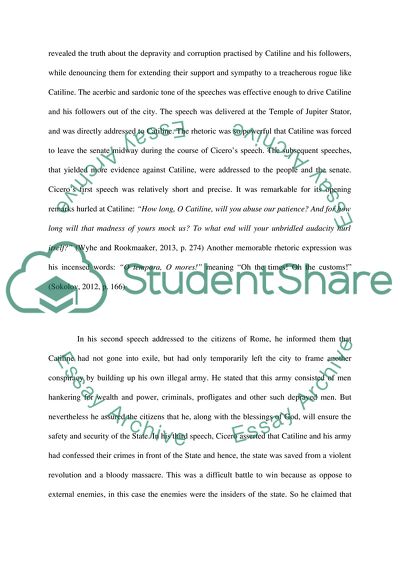Cite this document
(The Picture of the Catilinarian Conspiracy by Cicero and Sallust Essay, n.d.)
The Picture of the Catilinarian Conspiracy by Cicero and Sallust Essay. Retrieved from https://studentshare.org/visual-arts-film-studies/1630677-how-does-the-picture-of-the-catilinarian-conspiracy-differ-between-cicero-and-sallust-to-what-do-you-attribute-these-differences
The Picture of the Catilinarian Conspiracy by Cicero and Sallust Essay. Retrieved from https://studentshare.org/visual-arts-film-studies/1630677-how-does-the-picture-of-the-catilinarian-conspiracy-differ-between-cicero-and-sallust-to-what-do-you-attribute-these-differences
(The Picture of the Catilinarian Conspiracy by Cicero and Sallust Essay)
The Picture of the Catilinarian Conspiracy by Cicero and Sallust Essay. https://studentshare.org/visual-arts-film-studies/1630677-how-does-the-picture-of-the-catilinarian-conspiracy-differ-between-cicero-and-sallust-to-what-do-you-attribute-these-differences.
The Picture of the Catilinarian Conspiracy by Cicero and Sallust Essay. https://studentshare.org/visual-arts-film-studies/1630677-how-does-the-picture-of-the-catilinarian-conspiracy-differ-between-cicero-and-sallust-to-what-do-you-attribute-these-differences.
“The Picture of the Catilinarian Conspiracy by Cicero and Sallust Essay”, n.d. https://studentshare.org/visual-arts-film-studies/1630677-how-does-the-picture-of-the-catilinarian-conspiracy-differ-between-cicero-and-sallust-to-what-do-you-attribute-these-differences.


